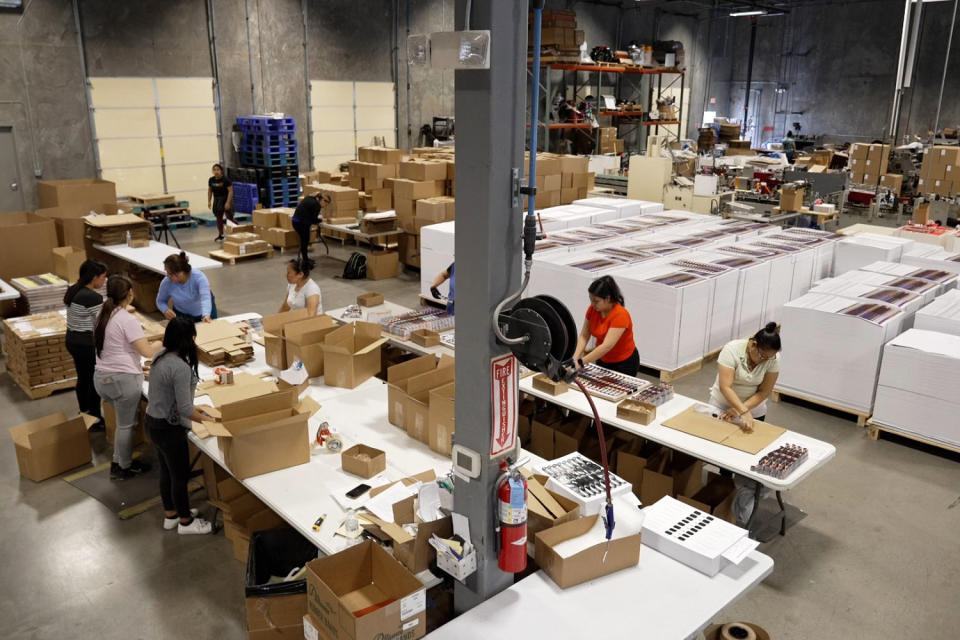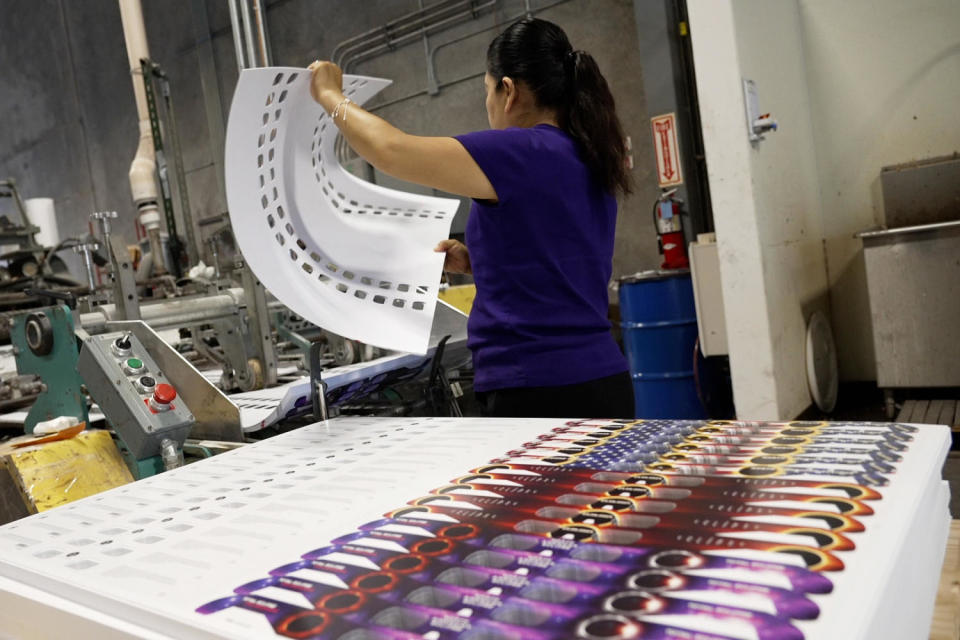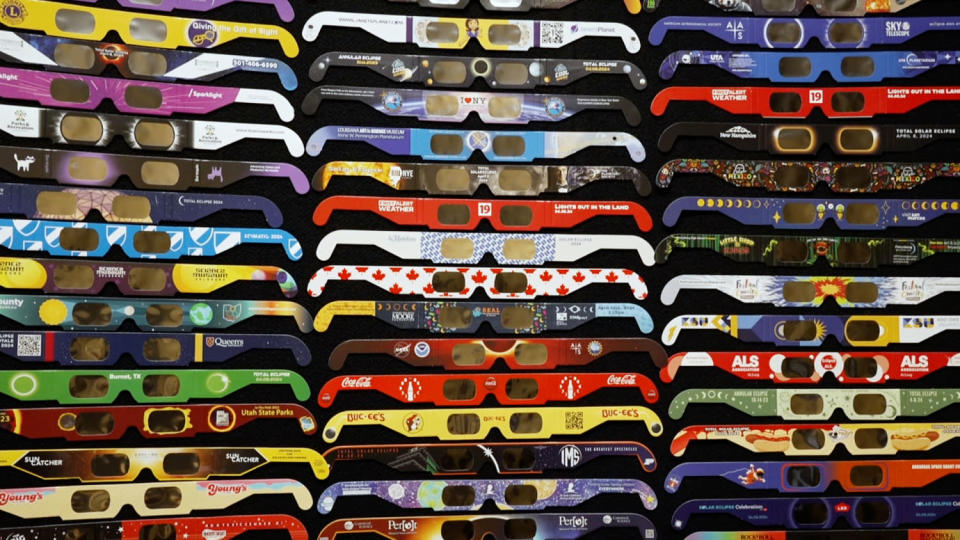Eclipse glasses: A look behind the scenes of how they're made
BARTLETT, Tenn. — In most other years, American Paper Optics produces 3D glasses to fulfill orders for theme parks and movie theaters, creating what its top executive calls “optical joy” on your favorite rides or for the latest action movie.
But in a year with an eclipse — like the upcoming total solar eclipse that will cross North America on Monday — the company pivots to make eclipse glasses.
It’s a relatively simple swap when it comes to materials: The assembly line to print, glue and fold the glasses shape is the same, but the polarized 3D lenses are switched out for specially tested and International Organization for Standardization-certified lenses that can stand up to the sun for the eclipse.
The company has become a leading supplier of these types of glasses, building up experience leading up to 2017’s solar eclipse, in addition to supplying glasses internationally to other countries in the path of eclipses since then.
But this year is special.
“This is what we would call the equivalent of 30 Super Bowls,” American Paper Optics President and CEO John Jerrit said during a tour of the company’s manufacturing facility.

He projects that the company will sell 75 million pairs of eclipse glasses this year, up from 45 million in 2017. With thousands of orders coming in daily, and in an attempt to avoid the mad dash by consumers for glasses like what happened in 2017, the team tripled its staff and ramped up production to make about 1.5 million pairs a day.
The assembly line is a combination of automation and work done by hand to make sure the essential eclipse glasses make it from the plant in Bartlett, Tennessee, just outside Memphis, to the path of totality in all corners of the country.

The company has partnerships with major retailers such as Kroger, Walmart and Lowes, along with options for direct-to-consumer orders online on its website, or via certified resellers. It sells its plastic glasses online for $29 each, while its cheaper pairs that use double laminated paperboard are sold 25 at a time for $50, or $39 for a 10-pack.
“You want to make sure that your glasses were tested by a U.S lab and produced in the U.S.,” Jerrit said. “I’m incredibly concerned [about counterfeits] because this is such an important event, and your eyes are too important.”

One room of the factory is dedicated to showcasing the thousands of different custom orders the company has produced for this year’s eclipse; it’s here that Jerrit pulls out a handful of glasses his team had no part in — the counterfeits.
“It’s very frustrating for us,” he said, fanning out copycat glasses ordered on eBay, Amazon or picked up at local retailers that, at first glance, look like the real thing. These glasses have a variety of defects from lacking proper labeling to improper manufacturing.
To combat the fakes, Jerrit’s team created the Core Four guidelines — elements on your glasses to look for to ensure you stay safe — all located on the interior of the glasses, the side that faces you when you put them on.
It’s complicated, but necessary to check that you have all four elements included on your glasses, to ensure the 4 ½ minutes of optical joy during the eclipse are both safe and enjoyable.
This article was originally published on NBCNews.com

